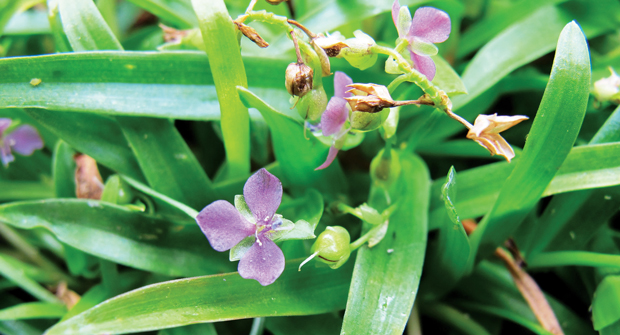
Every year, lawn care operators face the challenge of staying ahead of various stubborn weeds, such as doveweed, to stop them from taking root and spreading.
Doveweed, an aggressive summer annual, has increasingly become a nuisance on residential lawns in recent years. Effective control of doveweed depends on accurately identifying it, understanding the areas where it is prone to causing problems, knowing its distribution across the U.S., and implementing control measures at the appropriate time.
The problem with doveweed
Doveweed resembles grass but is a broadleaf species, according to Eric Reasor, Ph.D., a Southeast research scientist at PBI-Gordon. It features succulent leaves and stems, leaf sheaths with hairs, purple flowers on short stalks, and the ability to form roots at stem nodes.
Doveweed germinates when soil temperatures range between 70 and 75 degrees F, rendering early preemergence herbicide applications ineffective. These applications, typically made when the soil temperature is between 60 and 65 degrees F to control summer annuals like crabgrass and goosegrass, do not impact doveweed. Once it emerges from the soil, doveweed can be mistaken for St. Augustinegrass, contributing to its spread in warm regions.
“It is a challenging weed to manage because it germinates much later in the season and typically is not controlled by preemergence herbicides,” says Ken Hutto, Ph.D., product development manager for herbicides and fungicides for FMC. “St. Augustinegrass and doveweed look similar, which makes this weed difficult to identify before flowering.”
That’s why application timing is a critical element of doveweed management, Reasor says.
“Proper timing of (preemergent) herbicide applications is crucial for doveweed control,” he says. “If two (preemergent) herbicides are applied early to target crabgrass and goosegrass, a third (preemergent) application may be necessary to control doveweed.”
Problematic areas
Doveweed poses a challenge in warm regions of the South, Southeast and as far north as Virginia. Lawns dominated by St. Augustinegrass are particularly susceptible to doveweed, says Lane Tredway, Ph.D., technical services manager for Syngenta.
“Due to limited options for herbicides safe to use on St. Augustinegrass, we have seen a rise in doveweed occurrences in lawns dominated by this turfgrass species,” Tredway says.
Overirrigated lawns or those with poor drainage create favorable conditions for doveweed growth. Lawn care operators must educate customers about proper soil moisture management to prevent doveweed.
“The best approach to managing doveweed and preventing its establishment and spread is to combine good lawn care practices with herbicides safe for the specific turfgrass species,” says Tredway.
Controlling doveweed in lawns
Doveweed begins germinating late in spring when commonly used preemergent herbicides, designed for early emerging weeds, are less effective.
“While most commonly used (preemergent) herbicides for grassy weeds like crabgrass and goosegrass can also control doveweed, understanding the timing of preemergent herbicide applications is crucial to effectively target this late-emerging weed,” notes Reasor.
There are a few postemergent herbicides available for doveweed control. However, these treatments may harm turfgrass. Experts say it is important to carefully read the label of any postemergent herbicide to determine its safety for the specific turfgrass.
“When applying (postemergent) herbicides for doveweed control, ensure that the temperature is not too hot, as it may cause turfgrass injury regardless of species,” cautions Tredway. “(Postemergent) treatments should complement (preemergent) treatments rather than replace them, as they are generally less effective.”
Key strategies for management
Doveweed is an aggressive invader that thrives in areas where the turfgrass species struggle to compete. The best defense against doveweed is maintaining a healthy lawn with proper irrigation, fertilization and regular maintenance, Reasor says.
Lawn care operators should have a comprehensive plan to manage doveweed in areas where it is prevalent.
“Maintaining a healthy, well-fertilized and properly-irrigated lawn is the first line of defense,” Reasor stresses. “Additionally, applying up to three splits of a (preemergent) herbicide followed by multiple (postemergent) herbicide applications will effectively control doveweed.”

